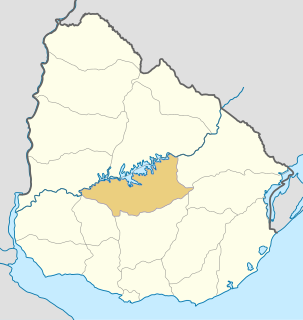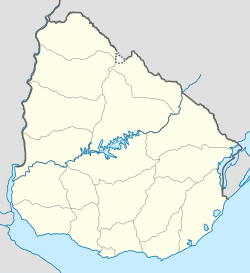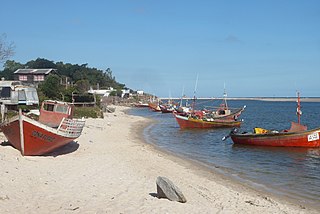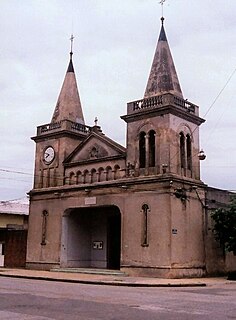Centenario | |
|---|---|
Town | |
| Coordinates: 32°49′48″S56°29′56″W / 32.83000°S 56.49889°W Coordinates: 32°49′48″S56°29′56″W / 32.83000°S 56.49889°W | |
| Country | |
| Department | Durazno Department |
| Population (2011) | |
| • Total | 1,136 |
| Time zone | UTC -3 |
| Postal code | 97007 |
| Dial plan | +598 4664 (+4 digits) |
Centenario is a small town in the north of Durazno Department of central Uruguay.

Durazno is a department of Uruguay. Its capital is Durazno. Its name means "peach" in Spanish, referring to the department's peaches and its status as an agricultural breadbasket. It is located in the centre of the country, and is bounded to the north by the Río Negro and the Río Yi to the South. To its north are the departments of Río Negro and Tacuarembó, to it southeast the departments of Treinta y Tres, to its south the departments of Flores and Florida, while on its east is the department of Cerro Largo.

Uruguay, officially the Oriental Republic of Uruguay, is a country in the southeastern region of South America. It borders Argentina to its west and Brazil to its north and east, with the Río de la Plata to the south and the Atlantic Ocean to the southeast. Uruguay is home to an estimated 3.44 million people, of whom 1.8 million live in the metropolitan area of its capital and largest city, Montevideo. With an area of approximately 176,000 square kilometers (68,000 sq mi), Uruguay is geographically the second-smallest nation in South America, after Suriname.











